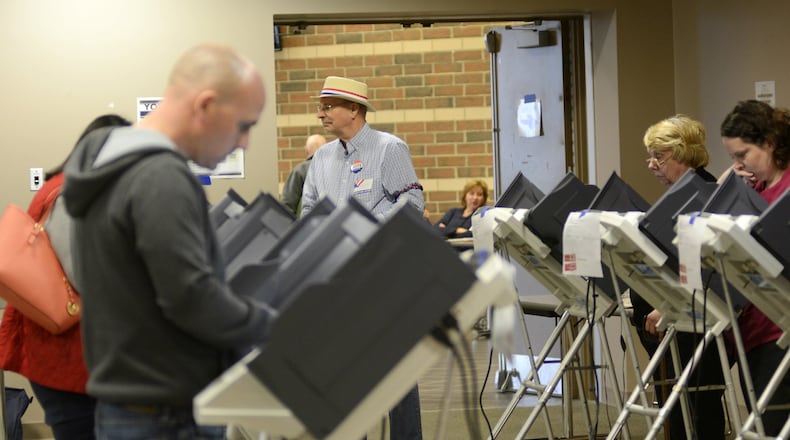The growth is almost entirely natural, meaning there were more births than deaths during the year.
After somewhat stemming the tide of people leaving Ohio for other states in the years since the recession, domestic migration out of the state is back up. About 27,500 more people left Ohio than moved in during the 2016 fiscal year.
Ohio continues to gain international migration or immigrants from other countries, according to population expert Mark Salling, although not as fast as some other states.
Salling, a senior fellow at the Levine College of Urban Affairs at Cleveland State University, said Ohio ranks 17th in receiving international migration per capita since 2010.
“That’s not bad, but it’s not really great either,” he said.
Ohio’s population is aging and the birthrate declining. Immigrants are often younger and in their child bearing years, so more international migration could help spur Ohio’s declining birthrate, Salling said.
“Sooner or later, unless something drastically changes, Ohio is going to be among those that are losing population,” he said.
Georgia gunning for seventh
Georgia, the nation’s eighth largest state, is hot on Ohio’s heals. The Peach State gained nearly 111,000 residents from 2015 to 2016, according to the census estimates. Georgia has grown by nearly 6.5 percent since 2010, while Ohio’s growth has been much slower — .67 percent over the same period.
At those rates, Georgia could unseat Ohio as the seventh most populous state by 2030.
The two states ahead of Ohio — Pennsylvania and Illinois — both lost population in the past year. So a shakeup of the 10 most populous states could be in the cards in the years to come.
Utah was the nation’s fastest-growing state over the last year, with an increase of 2 percent to more than 3 million people.
Other western states made the top five for growth, including Nevada (2 percent increase), Idaho (1.8 percent increase) and Washington (1.8 percent increase). Florida also saw a 1.8 increase in population.
Illinois lead the nation in population losses for the third year in a row.
Other Midwestern states have followed a similar trend as Ohio. In fact the Midwest was the only region with net migration losses from 2010 to 2014. Since then, the Northeast has also seen negative net migration.
Ohio’s anemic growth is in line with the nation as a whole, which grew by 0.695 percent between 2015 and 2016 to 323.1 million people, down from 0.732 percent the previous year — the lowest increase since 1937-1938, when it was 0.60 percent.
People nationwide have been having fewer children for decades, Salling said. The difference between the states seeing gains and those seeing losses is jobs.
“It’s going to take a lot of jobs, it’s going to take getting migration here whether it’s domestic or international for jobs that will change things,” Salling said. “Our birthrate’s not going to change very much, in fact it will probably continue to decline because of an aging population.”
Keeping students
Besides job creation efforts, state and local officials have targeted new college graduates with initiatives to get them to stay in Ohio.
In 2015, the Ohio Department of Education created the Global Reach to Engage Academic Talent, or Ohio G.R.E.A.T.
In a video message on the Ohio G.R.E.A.T. website, Governor John Kasich encourages international students to come to the state to study at top universities, and also to stay and work in emerging industries.
“We’ve got new jobs in advanced manufacturing, cloud computing, pharmaceutical research, technology, financial services, energy, just to name a few,” Kasich said in the video, “After years of sputtering along, Ohio is fast becoming the place to be. We want you to be a part of it.”
The Southwestern Ohio Council for Higher Education has long pushed internships as a key to retaining educated young people in the region.
Political implications
Ohio has 18 Electoral College electors currently, equal to the number of U.S. senators and members of the U.S. House in the state.
The state’s strength in the Electoral College has shrunk in recent decades as the state’s population has not grown as fast as other states. At its peak, Ohio had 26 electoral votes in the elections of 1932, 1936, 1940 and 1960. The state currently has the fewest electoral votes it has had since 1828.
If Ohio’s growth stalls further and turns to decline, combined with the aging of the population, the state will likely lose its status as a competitive “swing state” and be more likely to vote Republican, according to Mark Caleb Smith, director of the Center for Political Studies at Cedarville University.
The number of seats in Congress distributed to each state is re-examined each time there is an official Census. If fast-growing states like Utah, Florida and Georgia gain enough population, they could siphon seats from places like Ohio.
“If you go with trends it certainly looks like Ohio could lose another seat,” Smith said.
The current population trends, with the largest increases in the west and south, initially will benefit Republicans. But as those states grow they are also becoming more diverse, and therefore could be more competitive in the future, Smith said.
About the Author
